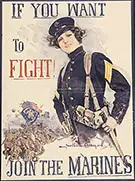Tanks of World War One
During the First World War, armies on both sides used tanks to change how soldiers went to war. Tanks were not a new idea. In ancient Rome, armies used heavy wagons and siege engines to protect soldiers during battle. In the middle ages, many used wagons banded in iron. These protected men and gold during war or travel. However, as people invented other war machines, they left these older inventions behind. Canon allowed soldiers to attack from a distance. Soldiers riding horses were much more maneuverable than early tanks.


Many inventors tried to change that. In the mid 1800’s, James Cowan invented the first steam powered tank. This machine ran slowly and wasn’t very useful. The armor worked well, but the vehicle was so heavy, the wheels got stuck in the mud. It was so slow that people walked faster than the tank. In 1911, several inventors figured out that they could use large, rolling tread instead of wheels. The wider tread spread out the weight of the tank. This kept the tank from sinking into the dirt.
But even with that, tanks were rarely used in battle. Armored cars and horses were far easier to use. Generals knew how to deploy these type of troops. Armored cars were very useful in desert battlefields and horses worked well in hilly or forested terrain. Forests didn’t have enough room for tanks. Sand got into the gears and treads, grinding tanks to a halt. So many thought that tanks were not good for wars. All that changed with the development of trench warfare, a whole new way to fight wars.

Warfare changes as the weapons of war changes. In early wars, the leaders stayed back from the lines while foot soldiers fought each other with swords, spears and even pitchforks. When armies used guns, generals stood to one side, while the armies faced each other, taking turns shooting at the enemy’s lines.
This changed during the revolutionary war. The Colonial Army used mainly farmers and hunters These men simply refused to shoot and just stand there and wait to be shot in return. Instead, they fired on the British army from the cover of trees and rocks. Soon, the British army learned the value of this new type of warfare. They used it in other battles. Armies started shooting from behind natural cover. They added sandbags in open areas to give their soldiers protection. However, the army soon discovered they could dig down and provide deeper and more effective protection. Trench warfare was born.

Trenches were not shallow holes in the ground. Trench warfare used long deep holes, six to eight feet deep and four to six feet wide. Some of these trenches were miles long and snaked through the countryside. Trenches provide the soldiers with protection from bullets. The deep holes also made it impossible for trucks or horses to navigate the land. Even the early tanks weren’t able to reach the soldiers in the trenches. That meant that once an army was “entrenched” it was very difficult, if not impossible to move them out. Battle lines didn’t change. Armies would lie along these battle lines for months.
Enter the tanks. Armies started experimenting with bigger and longer tanks. Armies developed tanks that were more than 20 feet long. They were more than twice as long as the trenches and they could drive over them. But tanks were also heavy. So as they drove over the edges of the trench, the sides collapsed, splitting the enemy troops. Because they were armored, the drivers were generally safe from bullets fired by the soldiers in the trenches. Finally, with guns mounted on the tank, gunners could fire at enemy lines that felt they were safe, far behind the trenches.

But the heavy armor wasn’t perfect. Tanks drivers had to see where they were going, so they looked out through slits in the front. This made them vulnerable to enemy sharpshooters. Also, armies placed mines in the land between the trenches. As the tank rolled over the mines, they would explode, destroying the tank and killing the occupants. Finally, because tanks moved slowly, soldiers could actually run at the tank with a hand grenade and blow the tank up. Sharpshooters soon started riding along with tank gunners to protect the tank from this type of attack.
Tanks changed the way war armies fought. These “trench busters” helped break the stalemate that trench warfare created. But tanks were still vulnerable to attack, showing that there is no safe place in war.



